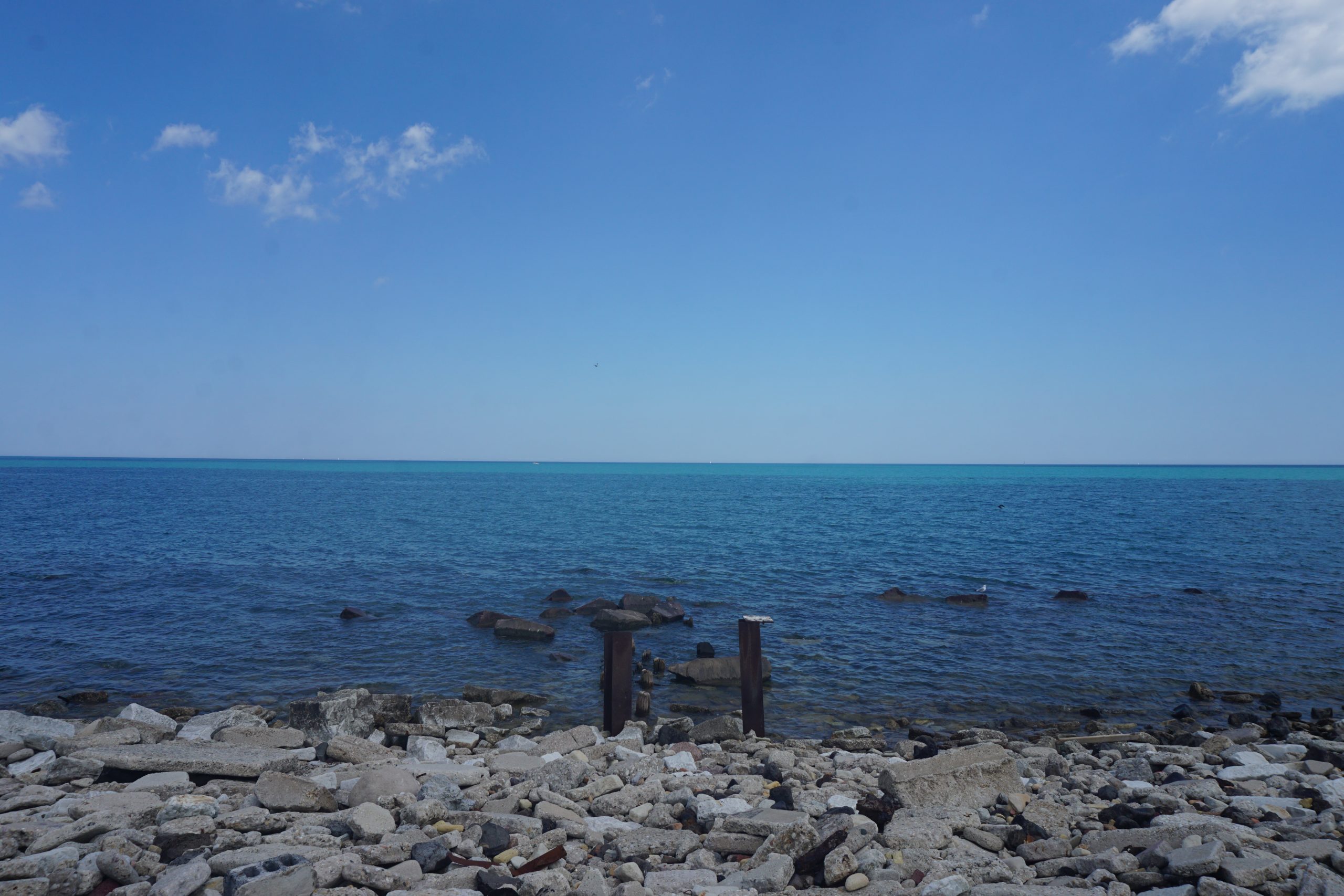Sea lampreys, a parasitic fish species, have had a significant impact on the fish population in Lake Michigan. These invasive creatures, native to the Atlantic Ocean, have been a major threat to various species of large fish, including lake trout, brown trout, lake sturgeon, lake whitefish, ciscoes, burbot, walleye, and catfish.
Impact on Fish Population

The sea lamprey’s feeding behavior is particularly damaging to its host fish. Each lamprey can kill up to 40 pounds of fish over its 12-18 month feeding period. The lamprey attaches to a host fish, bores into its flesh, and sucks out blood and body fluids, often killing the host or leaving it weakened and vulnerable to infections.
This parasitic behavior has led to significant declines in the populations of many fish species in Lake Michigan. The impact of sea lampreys on the ecosystem has been devastating, affecting the overall health and balance of the lake’s fishery.
Origin in Lake Michigan

Sea lampreys entered Lake Michigan through manmade canals and shipping locks, which allowed them to bypass natural barriers like Niagara Falls. They were first found in Lake Ontario in 1835 and later spread to the upper Great Lakes, including Lake Michigan, in the early 1900s. The construction of the Welland Canal facilitated their migration into the Great Lakes system.
Control Measures
To manage the sea lamprey population in Lake Michigan, several control measures are employed:
Lampricides
The primary method of control involves the use of lampricides, specifically TFM (3-trifluoromethyl-4-nitrophenol), which targets lamprey larvae without significantly harming other fish species. This pesticide has been used successfully for over 60 years.
Traps and Barriers
Traps and barriers are used to capture adult lampreys and prevent them from reaching spawning locations. There are over 30 barriers on Great Lakes streams in the United States, and traps are operated in about 40 tributaries during the spring and early summer.
Electrical Barriers
Experimental electrical barriers, like the one in Conneaut Creek, are being tested to deter lampreys from entering certain areas. These barriers apply an electrical current to the water, which acts as a deterrent to lampreys.
Research and Collaboration
The U.S. Fish and Wildlife Service, the Great Lakes Fishery Commission, and other partners are collaborating on research to improve control techniques, including the development of new lampricides and the use of attractants and repellents to guide lampreys towards traps or away from suitable spawning habitats.
These control measures have been successful in reducing sea lamprey populations by 90% in most areas of the Great Lakes, creating favorable conditions for the recovery of native fish species like lake trout.
Additional Facts about Lamprey Fish in Lake Michigan
- Lampreys are eel-like fish that lack jaws and have a circular, suction-cup mouth filled with sharp teeth.
- Sea lampreys are considered an invasive species in the Great Lakes, as they were not native to the region.
- Lampreys can grow up to 24 inches in length and weigh up to 3 pounds.
- Lamprey larvae, known as ammocoetes, live in the sediment of streams and rivers for several years before transforming into adults.
- Lampreys have a complex life cycle, spending part of their lives in the ocean or large lakes and the other part in freshwater streams and rivers.
- The Great Lakes Fishery Commission estimates that sea lampreys have caused over $20 billion in economic losses to the Great Lakes fishery since their introduction.
- Efforts to control sea lampreys have been ongoing since the 1950s, with the goal of protecting native fish species and maintaining a healthy, balanced ecosystem in the Great Lakes.
References
- Vox. (2022, May 24). The blood-hungry parasite that threatens a $7 billion economy in the Great Lakes. Retrieved from https://www.vox.com/down-to-earth/2022/5/24/23076704/sea-lampreys-invasive-species-great-lakes-fishing
- Great Lakes Fishery Commission. (n.d.). Sea Lamprey Control – Great Lakes Fishery Commission. Retrieved from https://www.glfc.org/control.php
- Pennsylvania Department of Environmental Protection. (2022, May 24). Sea Lampreys: Parasitic Predators of the Great Lakes. Retrieved from https://www.dep.pa.gov/OurCommonWealth/pages/Article.aspx?post=94
- U.S. Fish and Wildlife Service. (n.d.). Combating sea lamprey in the Great Lakes with new technologies. Retrieved from https://www.fws.gov/story/combating-sea-lamprey-great-lakes-new-technologies
- Great Lakes Fishery Commission. (n.d.). Sea Lamprey – Great Lakes Fishery Commission. Retrieved from https://www.glfc.org/sea-lamprey.php
